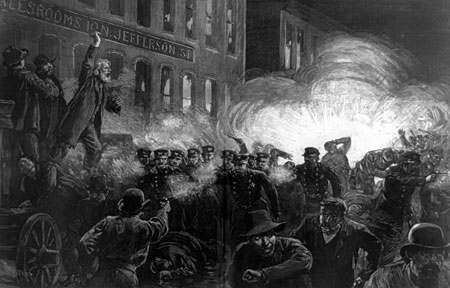Railway Strike and Haymarket Riot

Railway strike
Strikes were organized to force demands upon employers. In July of 1877, officials of the Baltimore and Ohio Railroad cut wages by 10 percent after cutting wages less than a year before. Workers rioted in response to the announcement. President Hayes sent federal troops to help control the unrest in cities all along the railroad line.
In 1886 workers began a national protest for an eight-hour workday. At the time, the economy was depressed so it was easy for employers to hire other workers to replace workers who had gone on strike. Replacement workers are called “scabs”. Employers used scabs to avoid having to negotiate with workers. At McCormick’s Reaper Factory in Chicago, protesting workers got into a fight with replacement workers. The police were called in to break up the fight. Union leaders called for a protest rally in Haymarket Square. Incited by a group of radical anarchists, the more-organized union members became unruly. Someone threw a bomb at the police and killed several of the officers. This became known as the Haymarket Riot and unions became associated with violence.

Haymarket riot